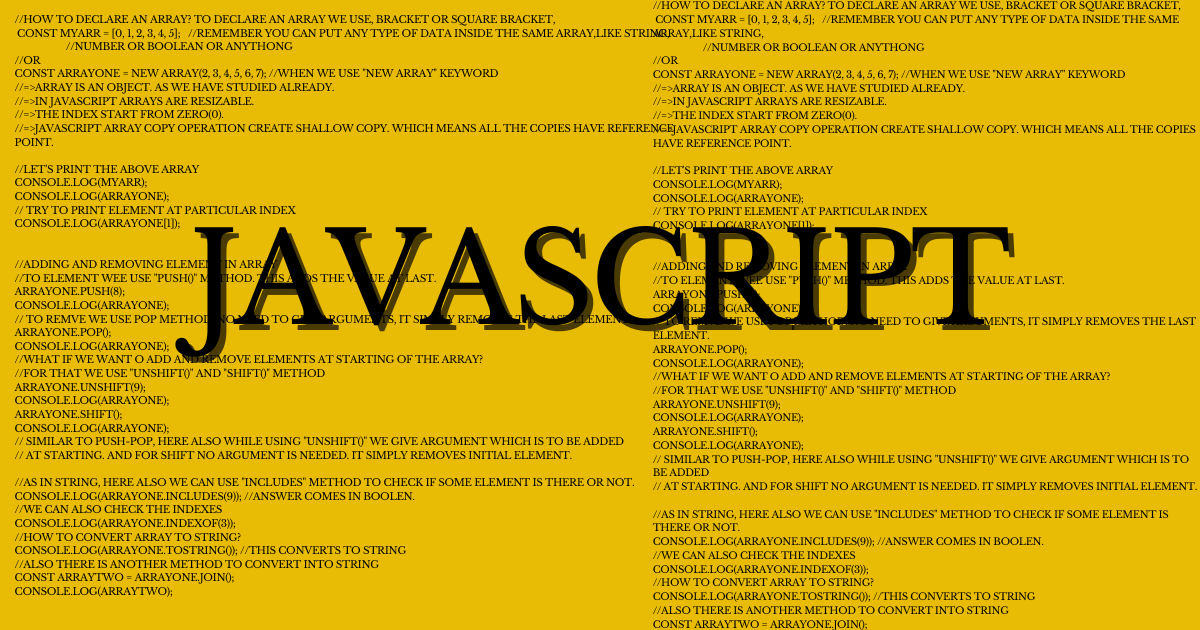Introduction to JavaScript
 Manish Kumar
Manish Kumar
Introduction to JavaScript
JavaScript is a versatile and widely-used programming language that powers the interactive features and dynamic content of most websites on the internet. In this article, we'll explore what JavaScript is, its history, the different versions, and how to use it to enhance your web development skills.
What is JavaScript?
JavaScript, often abbreviated as JS, is a high-level, interpreted programming language primarily known for its role in web development. Unlike HTML (Hypertext Markup Language) and CSS (Cascading Style Sheets), which are used for structuring and styling web content, JavaScript is all about making web pages interactive and dynamic.
Here are some key aspects of JavaScript:
Client-Side Scripting: JavaScript runs on the client's browser, which means it's executed on the user's device rather than on the web server. This enables real-time interactions and reduces the need for constant server requests.
Versatility: JavaScript isn't limited to web development. It can also be used for server-side programming (Node.js), desktop application development (Electron), and even mobile app development (React Native).
Object-Oriented: JavaScript is an object-oriented language, which means it uses objects to represent data and functionality. Objects can be easily reused and extended, making code more organized and maintainable.
History of JavaScript
JavaScript was created by Brendan Eich, then an engineer at Netscape Communications Corporation, in just ten days in May 1995. It was initially named "Mocha" and later "LiveScript" before settling on the name we know today, "JavaScript," to capitalize on the popularity of Java at the time.
In 1996, JavaScript was submitted to the ECMA International organization for standardization. This led to the development of ECMAScript, the standardized version of JavaScript. ECMAScript defines the core features and functionality of the language, ensuring compatibility across different browsers and platforms.
JavaScript Versions
JavaScript has gone through several versions and updates over the years, with each bringing new features and improvements. Here are some notable versions:
ES1 (ECMAScript 1): The first official version, released in 1997, laid the foundation for JavaScript.
ES3 (ECMAScript 3): Introduced in 1999, ES3 brought significant improvements, including regular expressions, try/catch exception handling, and better string handling.
ES5 (ECMAScript 5): Released in 2009, ES5 added support for strict mode, getters/setters, and array methods like forEach and map.
ES6 (ECMAScript 2015): A major update in 2015, ES6 introduced features like arrow functions, classes, modules, and destructuring.
ES7 and Beyond: Subsequent versions have introduced features like async/await (ES7), spread/rest operators, and more. ECMAScript is now updated annually, ensuring a steady stream of improvements.
How to Use JavaScript?
To use JavaScript in web development, you can include it directly within your HTML files using <script> tags. For example:
<script>
// Your JavaScript code goes here
alert("Hello, World!");
</script>
Alternatively, you can link to external JavaScript files like this:
<script src="myscript.js"></script>
In this case, the JavaScript code is placed in a separate file (e.g., "myscript.js") for better code organization and maintainability.
JavaScript can manipulate HTML elements, handle user interactions, and communicate with servers using AJAX (Asynchronous JavaScript and XML) requests. Learning JavaScript involves understanding its syntax, data types, control structures, and functions.
In conclusion, JavaScript is a fundamental language for web development, enabling you to create dynamic and interactive web applications. Its continuous evolution ensures that it remains a powerful and relevant tool for developers worldwide.
This article provides a brief introduction to JavaScript, its history, versions, and how to get started using it in web development. JavaScript's versatility and ongoing development make it an essential skill for modern web developers.
Subscribe to my newsletter
Read articles from Manish Kumar directly inside your inbox. Subscribe to the newsletter, and don't miss out.
Written by
Manish Kumar
Manish Kumar
Frontend Developer